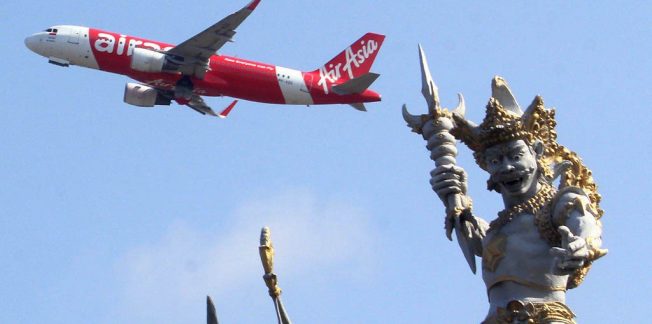The rumblings of Mount Agung have had a huge impact on the lives of people in Bali, with thousands of locals forced to flee their villages and foreign tourists becoming stranded or required to seek alternative modes of transportation to reach home. With no certainty as to how long the ominous situation will last, the effects will be felt not only on the resort island but also beyond.
If the situation persists, or worsens, the government will be unable to achieve the revenue target it set for tourism given that Bali has for decades been the sector’s primary source of income.
Indications of such a gloomy outlook are becoming apparent, with more and more foreigners canceling their trips to Bali after seismic activities at the volcano began last month. Worse yet, Ngurah Rai International Airport has been closed since Tuesday for safety reasons. The closure was tentatively extended until Thursday.
Chairman of the Indonesian Tourism Industry Association (GIPI) Didien Djunaedy predicted a 20-30 percent shortfall in the government’s tourism target this year given the prolonged scare shrouding Bali. Last year alone, nearly 44 percent of the 11.5 million foreign tourists that came to the country visited the island, which has regularly won international awards as the world’s best tourist destination.
As tourism is the backbone of Bali’s economy, the harm of an explosive eruption, like the one seen in 1963 that claimed more than 1,000 lives, will not stop at potential loss of human life and destruction property. Bali’s entire population of 4.25 million people will be affected by severely disrupted tourism.
It took several years for the island to find its feet after the two terrorist bombings in 2002 and 2005. Tourist arrivals nosedived, even in the absence of travel warnings from a number of countries, dealing tourism and related industries a stunning blow. To help revive tourism in Bali and around the country, the government introduced mass leave around certain major holidays like Idul Fitri, Christmas and New Year, a strategy that has remained effective until today as a way of encouraging domestic tourism.
The Bali and central governments may have already prepared plans A, B and C to deal with worst case scenarios that may follow disasters that deal a terrible blow to tourism. Whatever the case may be, however, the possibility of a Mount Agung eruption has exposed Indonesia’s heavy dependence on Bali as its main contributor to tourism revenue.
For decades, government efforts to develop and promote tourist destinations other than Bali have been sorely lacking. For many foreigners, all they know of Indonesia is Bali. Only recently has the government of President Joko “Jokowi” Widodo begun a campaign to develop 10 primary tourist destinations, dubbed the “new Balis.”
While this move deserves credit, it comes late and its realization has been slow as the government must build basic supporting infrastructure, which takes time and saps the state budget. But as they say, it’s better late than never.
Source
http://www.thejakartapost.com/academia/2017/11/30/editorial-more-than-just-bali.html

